After my parents and only sister had died, I hiked in their memory on a trail that we had often enjoyed as a family long ago, in the White Mountains, New Hampshire. At its most dramatic point, the path emerges from the cool, dark forest onto The Ledges, an expanse of steep granite shaped by eons of fierce winds and winters. As I stepped onto its dazzle, convulsive tears overwhelmed me. When my eyes opened again, its shapes and shadows struck me as animate, starting with the dolphin in #4. Nature, now human, cultural, and personal, was charged with metaphors and meaning. Hallucinations? General pareidolia? The primitive camera could not stop me. Twice since, I have returned to the mountain for more. Although that extreme proved irreproducible, enough of its seeing persisted to yield more photographs.
One perceiving this, I recognized and accepted my altered state of mind.
#5 belongs together with #6. They present the same cracks but different figures, each at his emotional extreme, so that together, they demonstrate photography's visual ambiguity, an abiding theme of mine--or obsession. At the very least, they upset the still-reigning notion that photographs copy scenes-in-themselves.
How could nature have made this crack, consistent, smooth, and beautiful over several yards, rather than some skilled stonecutter glowing with expressive intent?
As if, as if, as if pivoting on the axis defined by the stone below, a clock hand about six feet long arcs along the crevasse above.
It looks as if the jagged walls of a crevasse touched delicately -- kissed? -- at the one point. A deeply pious Catholic singled this one out as spiritual.
These waves of stone appear as if ... what? Foamy swash conquering a mountain beach? Heavy smoke billowing? The mountain can make stone seem to melt and move. I may have been trying to imitate (tho not consciously) an image that I had long marveled at, Edward Weston's "9T Cypress Point Lobos," which makes an old tree's grain seem to flow or flame. ( http://www.kimweston.com/edward-weston-photography-archive/point-lobos/9t-cypress-point-lobos/ )
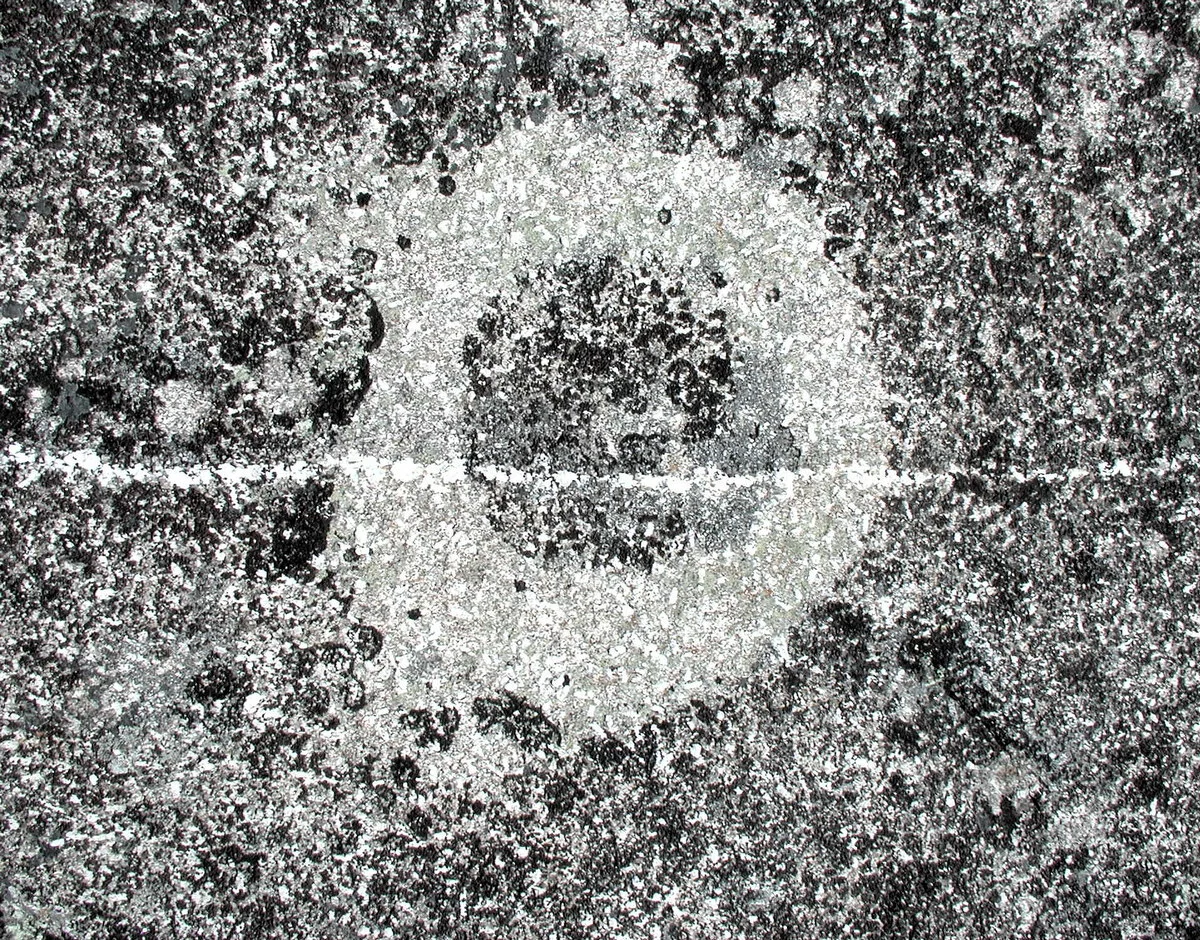


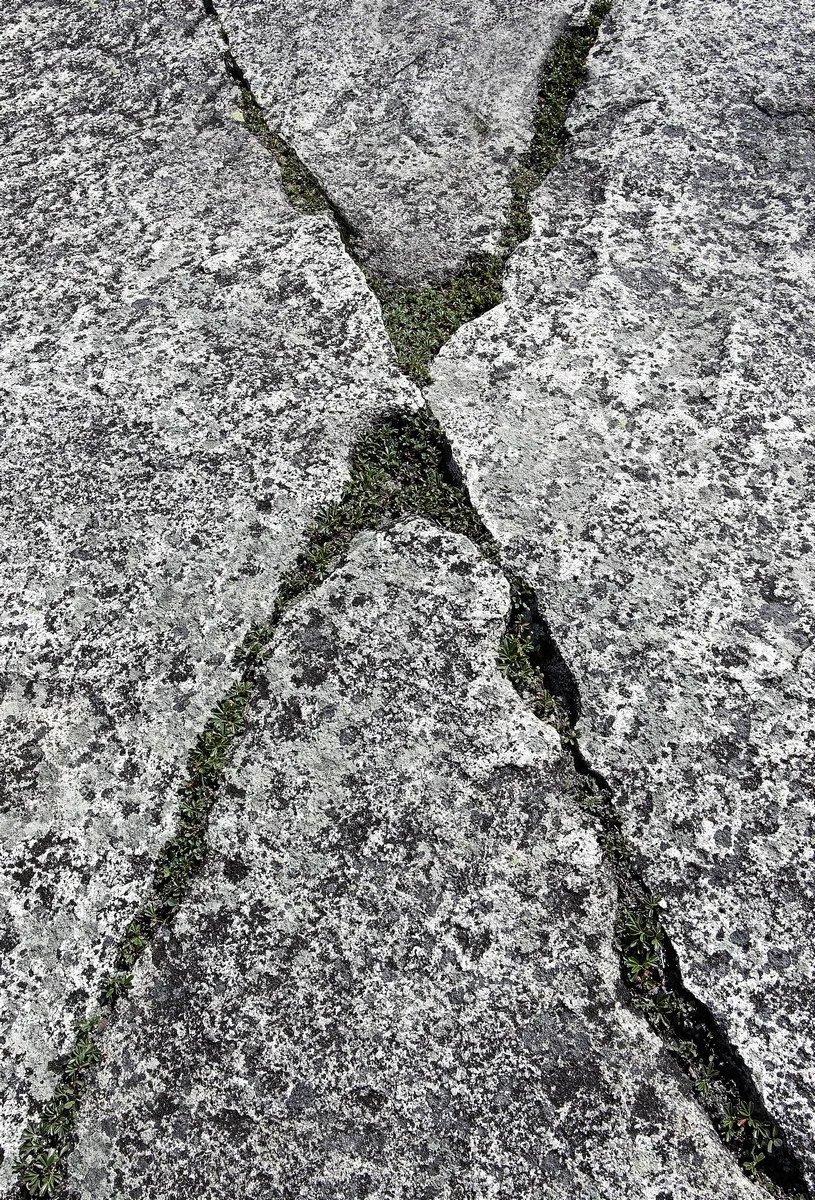

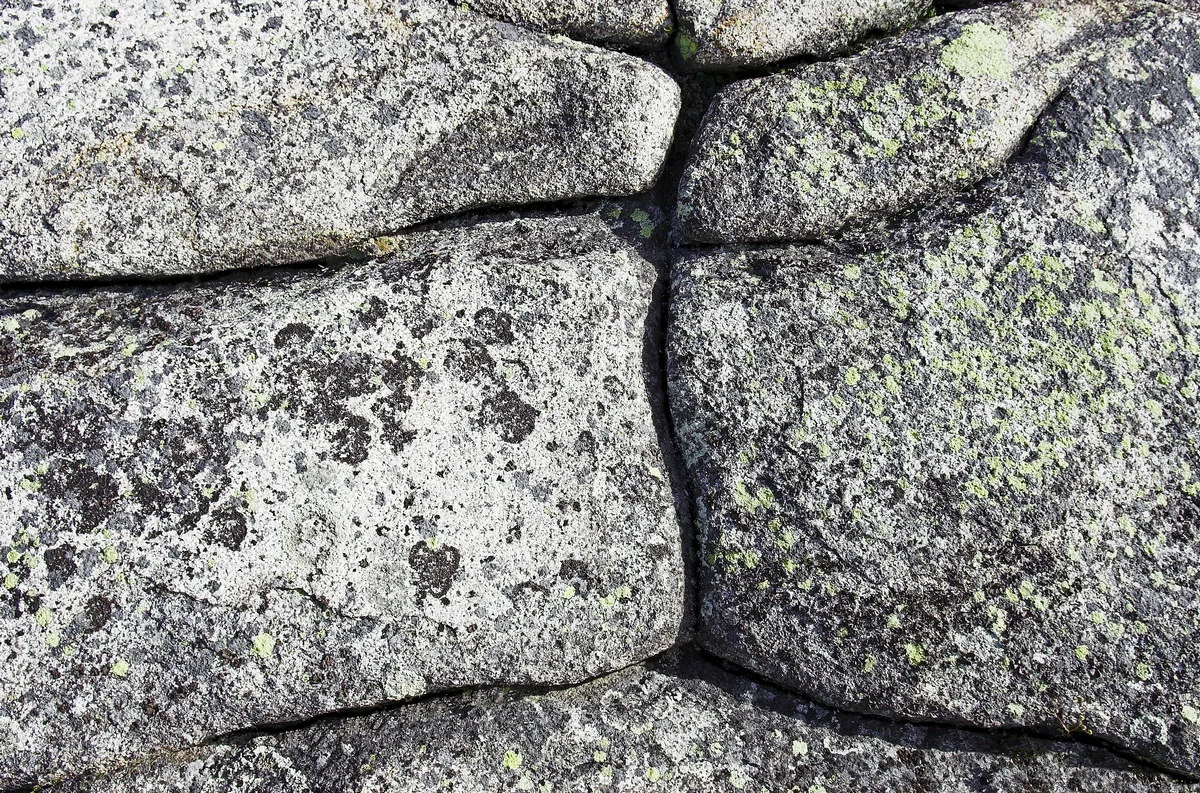
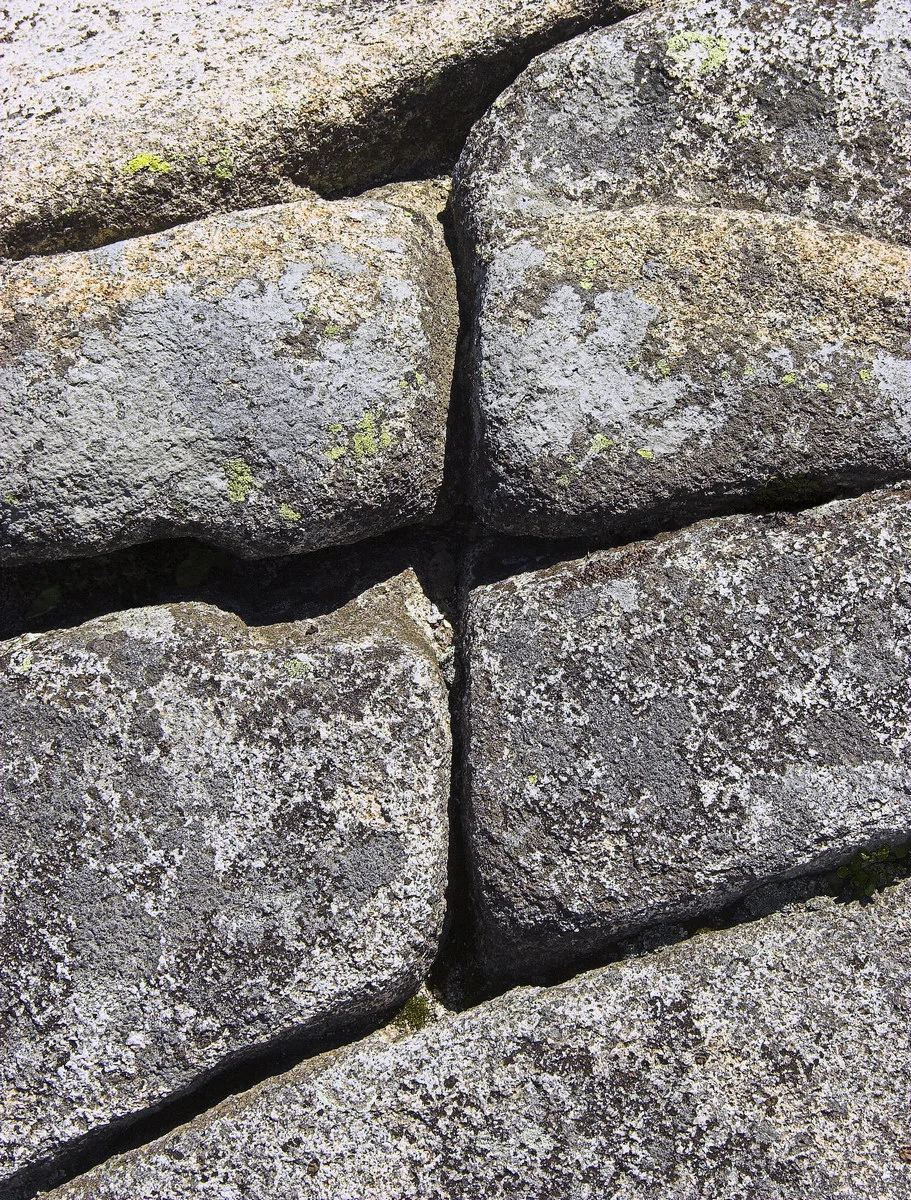
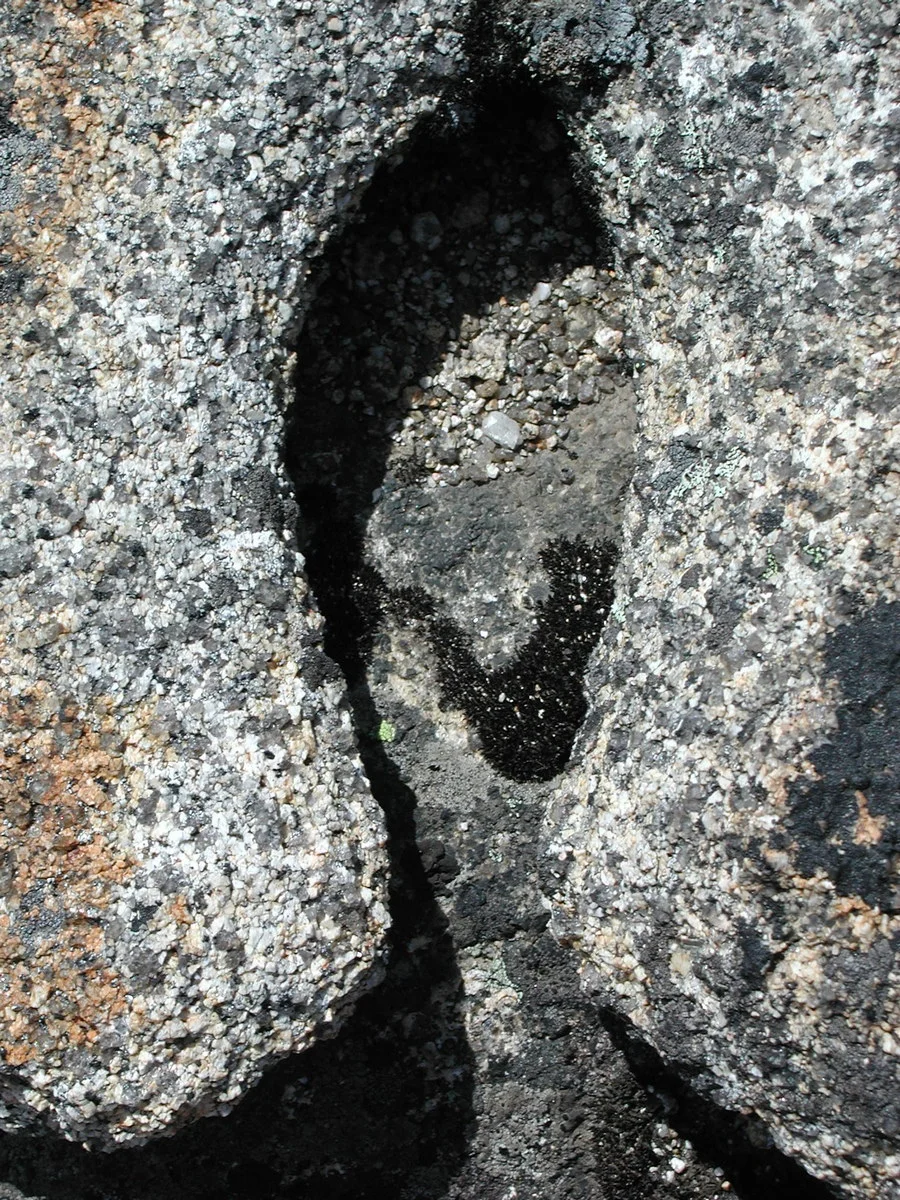


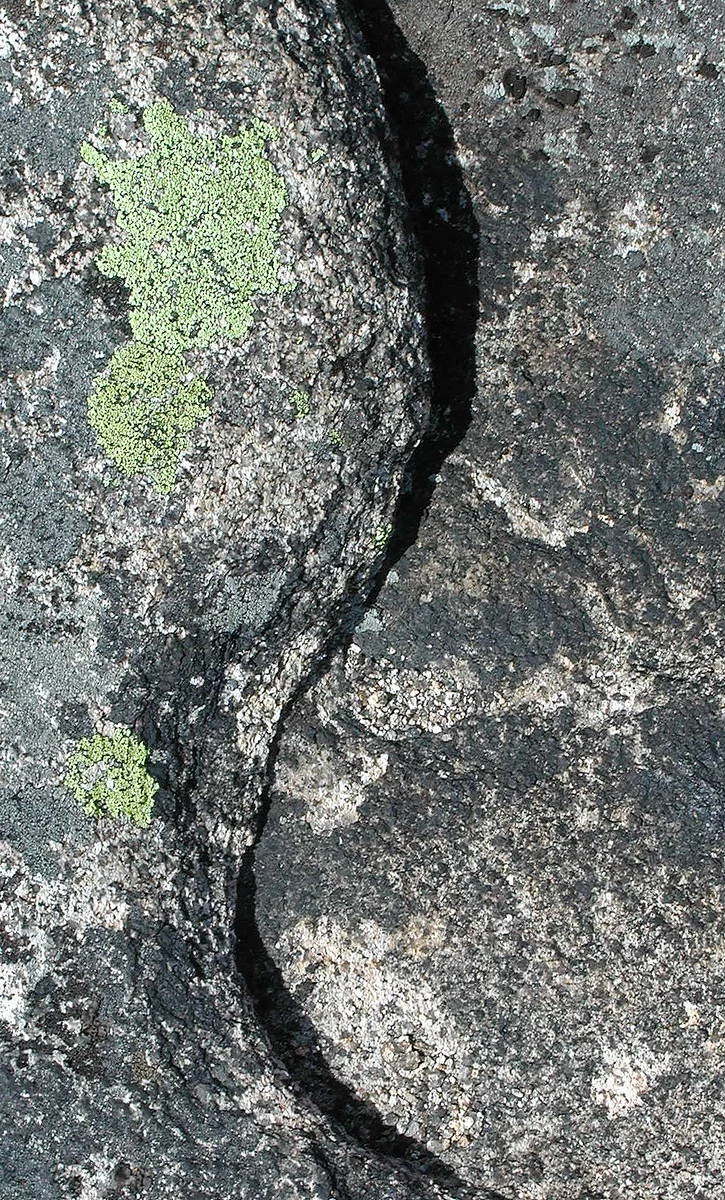
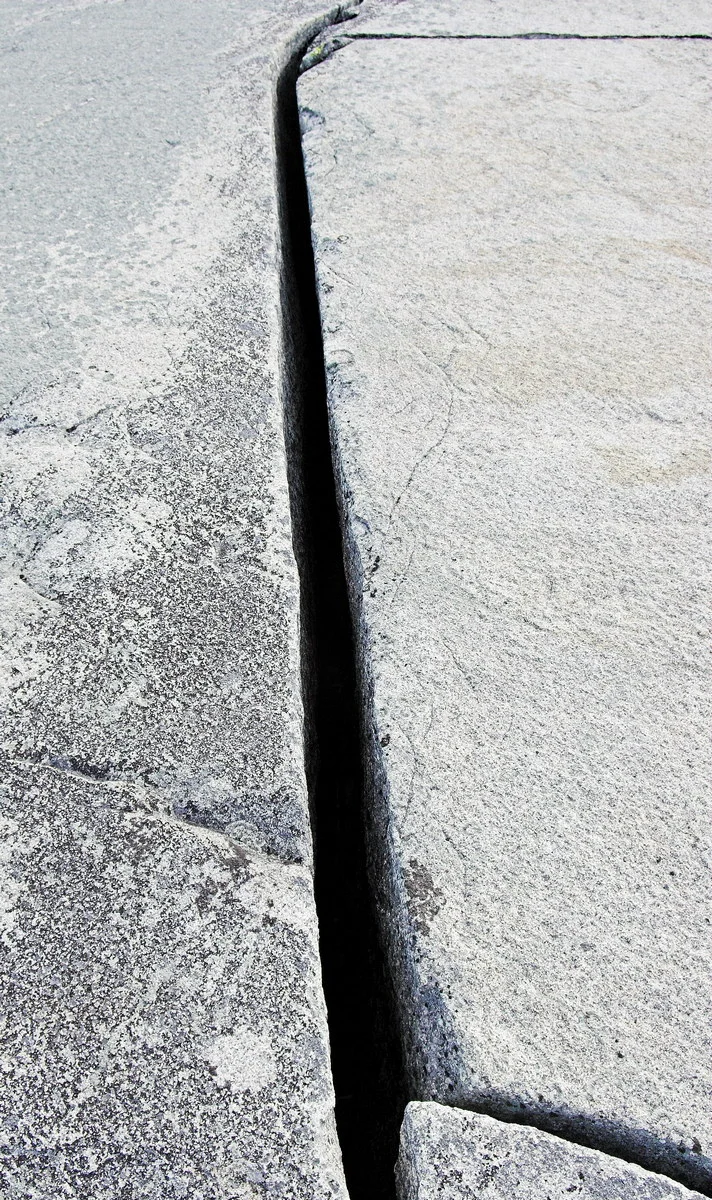

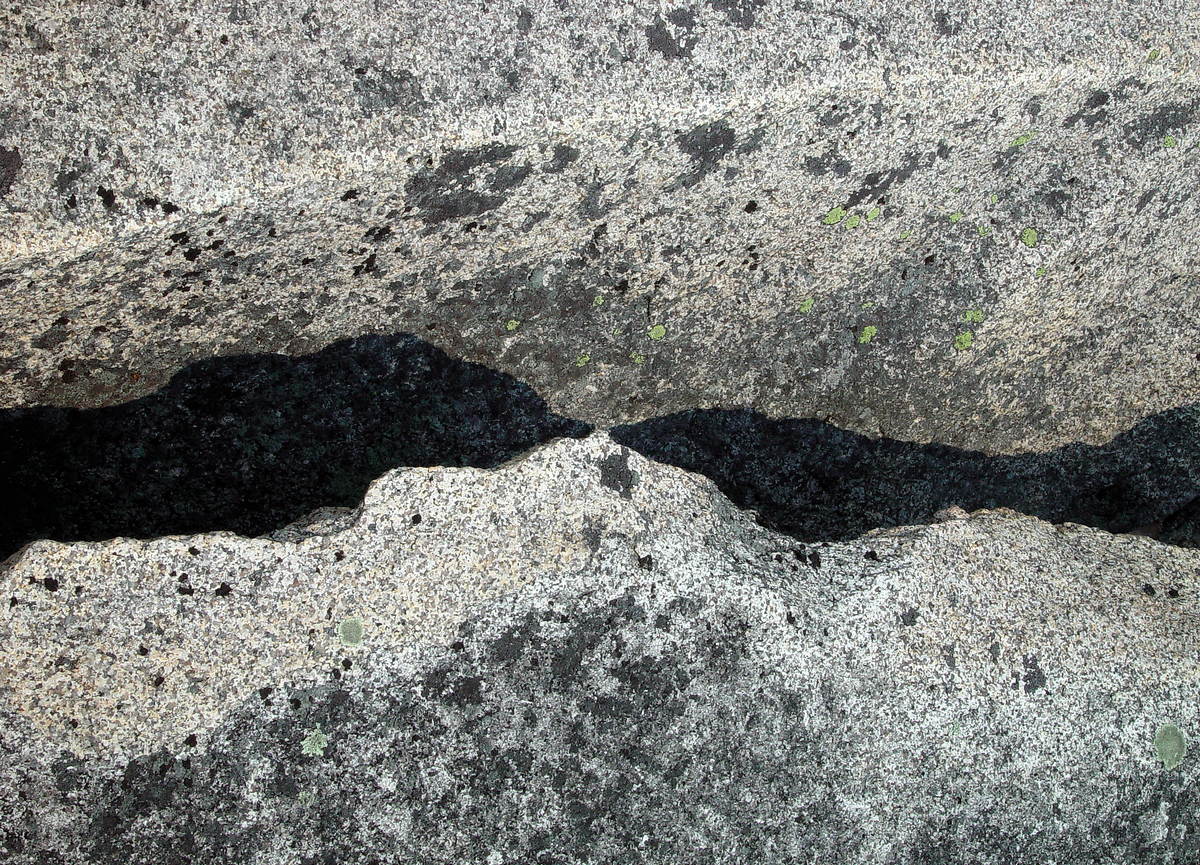


Because of the mountain-like shape created by the shadows on the rock, this photograph introduced an exhibition of the portfolio at The C. G. Jung Center in Houston, TX, in 2008, a fitting site, since Jung's emphasized symbols in mental life. An unusually pious Catholic once remarked about one member of this portfolio, "I sense spirit here," which I, an atheist, gratefully accepted as a high compliment and testimony that we, usually separated by a wide gulf, had communicated. -- A lichen forms the white blob and circle in the center, but many viewers, including me, feel tempted to take it as a sign or symbol. Of what? From whom? Meaning what? No answers, but no matter; the notion persists, the perhaps-symbol packing punch partly because just perhaps.